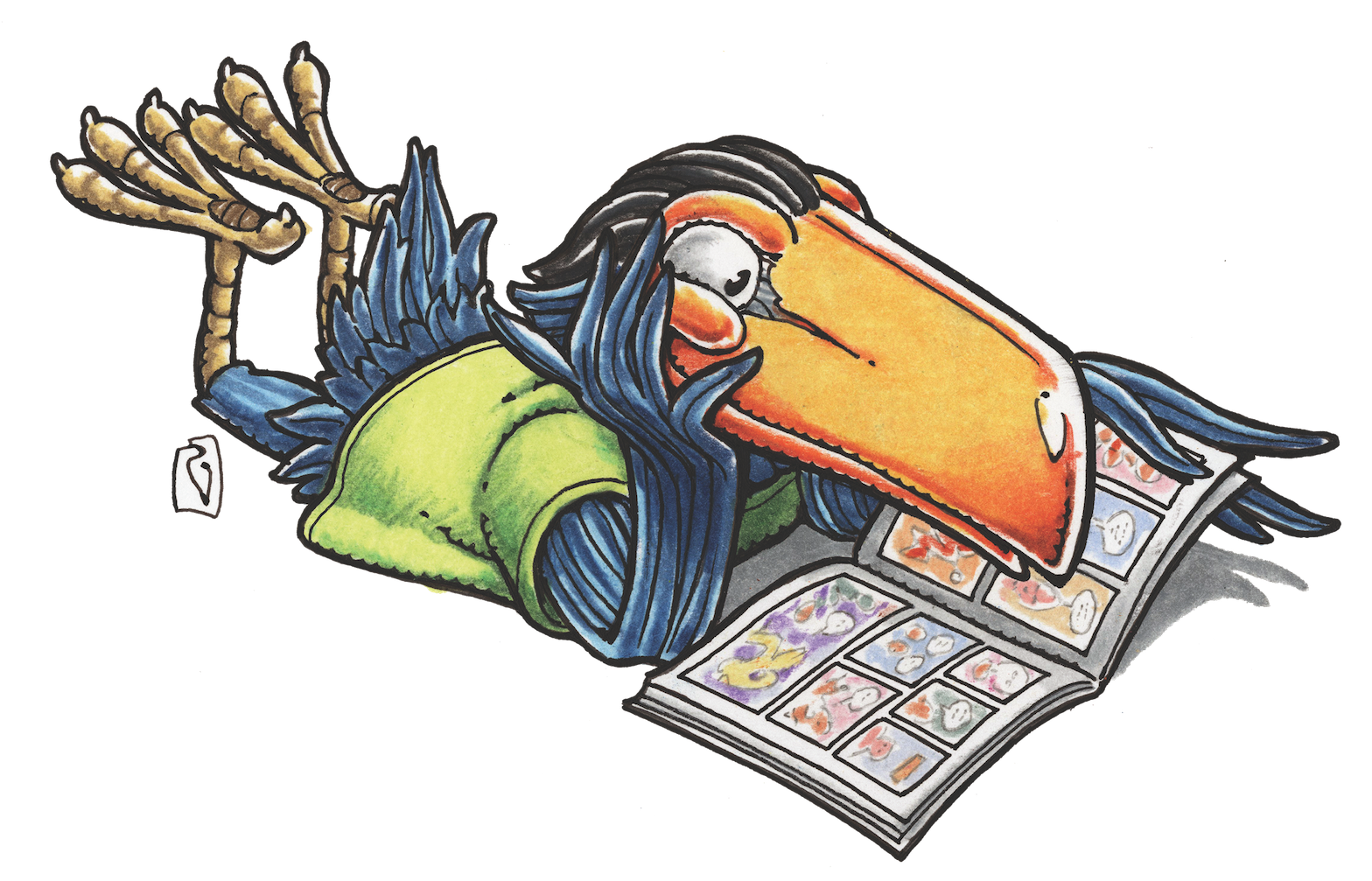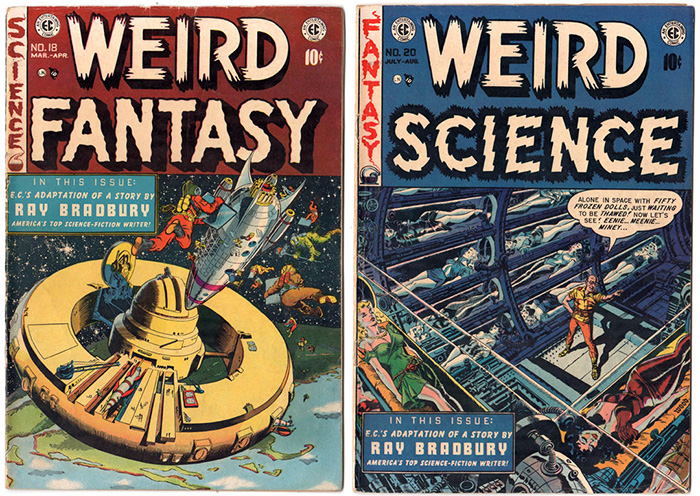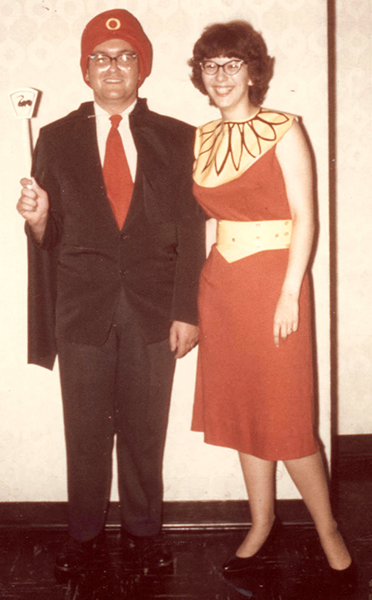MAGGIE’S WORLD BY MAGGIE THOMPSON
Maggie’s World 032: 55 Years and Counting

September. It’s a pivotal point—as exemplified by the start of the school year near Labor Day. Also: Labor Day Weekend, as a matter of tradition, is often when World Science Fiction Conventions are held.
My first was in 1955, when Mom, Dad, and I (age 12) attended Clevention in Cleveland (attendance 380). After I met Don (at a science fiction picnic in 1957), we both attended Worldcons: separately in 1959, Detention (Detroit, attendance 371)—and 1960, Pittcon (Pittsburgh, attendance 568). After we were married in 1962, we attended: in 1962, Chicon III (Chicago, attendance 730); in 1963, Discon I (D.C., attendance 600); in 1966, Tricon (Cleveland, attendance 850); in 1969, St. Louiscon (St. Louis, 1,534); and in 1973, Torcon II (Toronto, attendance 2,900). Torcon, we decided, had way too people for us—but, by that time, comics fandom had long been established, and its own (smaller) conventions were well under way. After all, 1970 had marked the beginning of San Diego’s annual convention three years earlier.
More Than Half a Century Ago
Looking back, I return to that 1960 September—and the comics world as we were living it 55 years ago.
Comics had been one of the topics of our day-long conversation the first time Don and I had met—and the first communication following that contact had come when Don had sent me a copy (folded to fit into a #10 envelope) of Harvey Kurtzman’s Humbug #1 (August 1957). Among the challenges for us in those days was, of course, that comic books that sat on one newsstand might never appear on other newsstands in the same town, so we were motivated to keep in touch when we came across the cool things.

Despite the Code, science fiction buffs by 1960 had nevertheless seen DC tryouts for Space Ranger, Adam Strange, Rip Hunter, and Metal Men—and such science fiction professionals as Mort Weisinger, Julius Schwartz, Edmond Hamilton, and Gardner Fox had been actively producing comics for years. Moreover, super heroics were being revived in what would eventually be called the Silver Age and finding their niche in adaptations of Golden Age characters to fit the restrictions of the Comics Code. DC had already tested the water with revamps of its Flash, Green Lantern, Aquaman, and Atom. Green Lantern, in fact, had just earned his own title following the success of The Flash nearly two years earlier. Justice League of America was hitting newsstands. Marvel had just revived Rawhide Kid and had come out with its own adaptation of Golden Age characters via The Fantastic Four. And Harvey Kurtzman was trying yet another new format with Help!
On the other hand, because the Comics Code was in full sway by then, many of the comics we’d grown up loving had either gone away or had become crazily modified to fit the regulations. Heck, maybe that’s part of what inspired so much nostalgia: When we looked at comics covers on the newsstand, we’d shake our heads over what we no longer saw. Remember when Batman actually fought crime?

When Tomahawk interacted with Native Americans and Redcoats? When there was a time before goofball fantasy characters and crazy dinosaurs chased each other through adventure stories? We also missed some of our favorites from earlier years. What was the meaning of Billy Batson’s magic word? Didn’t Mary Marvel have a different meaning for the same magic word? The last issue of Whiz Comics (#155) had been dated June 1953; the last issue of Captain Marvel Adventures (#150) had been dated November 1953. And the public had forgotten. Just … forgotten.
So it was that, when Dick and Pat Lupoff came to the Pittcon Worldcon masquerade as Captain and Mary Marvel, the reaction was a delighted “Oh, remember them?” Although we’d been able to buy Fawcett’s super-heroes from newsstands less than a decade earlier, by September 1960, such treasures could be found only in second-hand shops.
1960 Was Comic Book Time
Eisenhower was president, a First-Class stamp was 4¢, and Flintstones and The Andy Griffith Show were scheduled for autumn TV premieres. The day after Worldcon wrapped up, Psycho (based on a novel by fantasist Robert Bloch) opened in America. And comics references resonated with pop culture buffs.
Among such fans were Dick and Pat—and it was their costumes (though they didn’t win an award in the con masquerade) that led Don and me to chat with fellow fan Hal Lynch at the following evening’s banquet to speculate about forming some sort of comics fandom. What we didn’t know at the time was that, at Pittcon, Dick and Pat had also handed out copies of the first issue of their fanzine Xero.
And in that incendiary issue was the article “The Big Red Cheese,” kicking off the series to be collected later in All in Color for a Dime.
At the same time, two other comics aficionados—knowing nothing of science-fiction fans or Worldcons—also decided to begin publishing articles about comic books. Jerry Bails and Roy Thomas were getting together to produce Alter Ego. And, at DC, Julius Schwartz was beginning to run fans’ addresses in the letters columns of comics he was editing.

So it began. Mind you, in those early years, comics had already begun to make their presence known among science-fiction magazine collectors. While, at the 1960 Pittcon masquerade, Don and I had been one of the members of the “Best Group,” it had had nothing to do with comics. (By the way, there was no such thing as cosplay outside the masquerade then; just saying.) But two years later, Don and I went in costumes I put together. No, we didn’t win that competition; perhaps there was little recognition to be earned by costumes that were capable of construction by my unskilled hands. But we did hang out with others who had similar interests. And, while my mastery of what was called for to pay tribute to Fawcett’s Ibis and Taia was limited, master costumer Bjo Trimble put together a group to be reckoned with at that 1962 Worldcon. Members of the Los Angeles Science Fantasy Society were drafted to wear the costumes of the Justice Society of America. (John Trimble, for example, wore the wild color choices of Sandman, and Jack Harness toted the wings of his character: Hawkman.) Because, by that point, fantastic comics characters had gained the attention of convention-going fans.
What would we have thought, if we could have guessed at the crowds that were to descend on San Diego in 2015 in celebration of our hobby? What would we have thought, if we could have glimpsed the magnificent costumes concocted to celebrate comics only 55 years later? We’d have been staggered—and thrilled.
Maggie’s World by Maggie Thompson appears the first Tuesday of every month here on Toucan!